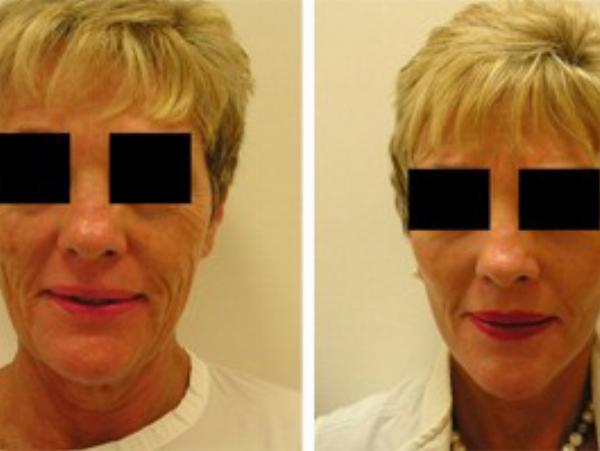Best Facelift for Over 50: What Works and What Doesn’t

Strong 8k brings an ultra-HD IPTV experience to your living room and your pocket.
As we age, the effects of time and gravity become more apparent on our faces. For individuals over 50, these changes can significantly impact self-esteem and appearance. Facelift surgery, or rhytidectomy, is a popular option for rejuvenating the face, but the effectiveness of various Best facelift in muscat techniques can vary depending on individual needs and the extent of aging. This comprehensive guide will explore what works and what doesn’t for those considering a facelift after 50.
Understanding the Aging Process
Before diving into specific facelift options, it's essential to understand the aging process of the face. As we age, the skin loses elasticity, volume, and hydration. Fat pads that once provided youthful contours begin to diminish, leading to sagging and the formation of wrinkles and deep lines. Bone structure also changes, which can affect the overall appearance of the face.
Facelifts aim to address these concerns by tightening and lifting the skin, repositioning underlying tissues, and sometimes adding volume to restore a more youthful appearance. However, the effectiveness of a facelift largely depends on the chosen technique, the surgeon’s skill, and the individual's unique anatomy.
Types of Facelifts and Their Suitability for Those Over 50
Traditional Full Facelift
What It Is: A traditional full facelift addresses significant sagging and loss of volume in the face and neck. It involves incisions along the hairline, around the ears, and sometimes under the chin, allowing the surgeon to lift and reposition deeper tissues and remove excess skin.
What Works: This procedure is ideal for individuals over 50 who have extensive sagging and deep lines. It provides comprehensive results, addressing both the face and neck for a more dramatic improvement in appearance.
What Doesn’t: The recovery time for a full facelift can be longer compared to less invasive options. Risks include potential scarring and a more extended downtime. Additionally, it may not be necessary for those with less severe signs of aging.
Mini Facelift
What It Is: A mini facelift, or short-scar facelift, targets less severe signs of aging, typically focusing on the lower face and jawline. The procedure uses smaller incisions and is less invasive than a full facelift.
What Works: This option is suitable for those who want to address early signs of aging without the extensive downtime associated with a full facelift. It provides a more subtle lift and is ideal for individuals who are beginning to experience sagging but don’t need a comprehensive overhaul.
What Doesn’t: A mini facelift may not provide the same level of improvement for those with more advanced signs of aging. It also may not address neck laxity effectively, which can be a concern for individuals over 50.
Mid-Facelift
What It Is: A mid-facelift focuses on the middle portion of the face, including the cheeks and nasolabial folds. The procedure involves incisions inside the mouth or along the lower eyelid.
What Works: This technique is excellent for rejuvenating the cheek area and addressing mid-face volume loss. It’s less invasive than a full facelift and can provide a noticeable improvement in the overall appearance of the face.
What Doesn’t: It may not address lower facial or neck sagging, so it’s not suitable for those with more extensive signs of aging in these areas.
Thread Lift
What It Is: A thread lift is a minimally invasive procedure that uses temporary sutures to lift and tighten the skin. The threads are inserted through small incisions and are designed to stimulate collagen production over time.
What Works: This option is ideal for individuals who want a less invasive procedure with minimal downtime. It can offer a subtle lift and is suitable for those with mild to moderate signs of aging.
What Doesn’t: The results of a thread lift are less dramatic compared to other facelift options, and the effects may not last as long. It’s not ideal for those with significant sagging or more severe aging signs.
Liquid Facelift
What It Is: A liquid facelift uses dermal fillers and Botox to address volume loss and wrinkles. It involves injecting these substances into specific areas of the face to provide a non-surgical lift.
What Works: This option is great for those who want immediate results with no downtime. It can effectively address wrinkles, restore volume, and provide a temporary lift.
What Doesn’t: The results are temporary and require regular maintenance. It may not address significant sagging or deep lines effectively and is not a substitute for surgical facelifts.
Choosing the Right Facelift for You
Choosing the best facelift procedure depends on several factors, including:
Extent of Aging: Assess the degree of sagging, wrinkles, and volume loss. A full facelift may be necessary for extensive signs of aging, while a mini or mid-facelift might be sufficient for less severe cases.
Desired Results: Consider the level of improvement you want. More invasive procedures offer more dramatic results, while minimally invasive options provide subtler changes.
Recovery Time: Evaluate how much downtime you can afford. Traditional facelifts require more recovery time, while non-surgical options have minimal downtime.
Budget: Costs vary widely between different facelift techniques. Non-surgical options are generally less expensive than surgical procedures.
Overall Health: Your health and medical history will influence the best facelift option for you. Consult with a qualified surgeon to determine the safest and most effective procedure.
Consulting with a Board-Certified Surgeon
Regardless of the facelift option you’re considering, it’s crucial to consult with a board-certified plastic surgeon who specializes in facial procedures. They can provide a thorough evaluation, discuss your goals, and recommend the most appropriate technique based on your individual needs.
During the consultation, discuss your expectations, ask about the surgeon’s experience, and review before-and-after photos of previous patients. This will help you make an informed decision and ensure you choose a procedure that aligns with your aesthetic goals.
Conclusion
For individuals over 50, the best facelift technique depends on the extent of aging, desired results, recovery time, and overall health. While traditional facelifts provide comprehensive results, minimally invasive options like mini facelifts, thread lifts, and liquid facelifts offer effective alternatives for less severe aging signs. Consulting with a skilled, board-certified surgeon will ensure you select the most suitable procedure for achieving a youthful, rejuvenated appearance. By understanding what works and what doesn’t, you can make an informed decision and enjoy the benefits of a refreshed, youthful look.
Note: IndiBlogHub features both user-submitted and editorial content. We do not verify third-party contributions. Read our Disclaimer and Privacy Policyfor details.


